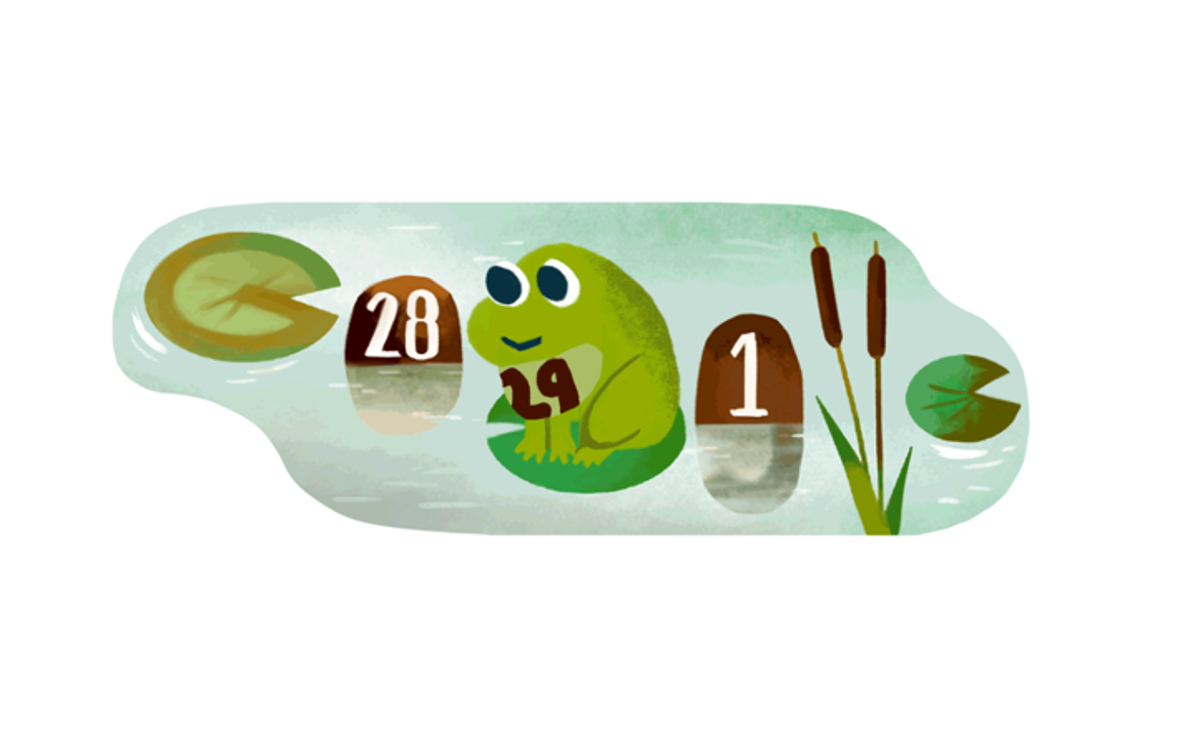Google Doodle celebrates leap year

Google Doodle is celebrating Leap Day on 29 February - a date that only comes around every four years to keep our calendars in line with the Earth and the Sun.
The artwork for this doodle depicts a little green frog with the number ‘29’ on its chest, landing and jumping off a lily pad between the numbers ‘28’ and ‘1’.
It takes the Earth approximately 365.25 days to orbit the Sun, which is called a solar year.
However, we usually round the days in a calendar year to 365 to make things simple, but to compensate for the missing quarter days, one day is added to our calendar every four years and is known as a leap year.
The day is added to the end of February, the shortest month, and one which usually consists of 28 days, but in 2024, there are 29.
While it may seem unnecessary to add a whole day every four years just to make up for the missing quarter days, if they were ignored, it could seriously mess up how we perceive our calendar.
Each Earth day represents how many hours it takes for the planet to finish one rotation on its axis – this is 24 hours. A year is the amount of time it takes for a planet to do one orbit of its star – in our case, the Sun.
If you kept subtracting the quarter days, or approximately six hours, to create a nice round 365-day year, and leap years were never added, all those missing hours would start adding up into days, weeks and eventually months, according to Nasa.
In a few hundred years, you would find all the months would be out of kilter, and our summer months would eventually occur when the winter season is happening.
While a few countries around the globe divide their time using different calendars, much of the world uses the Gregorian calendar.
This calendar system was actually introduced for use by Julius Caesar during the Roman Empire, around 46 BC; however, their calendar was 11 minutes and 14 seconds longer than it should have been, Nasa said.
Due to this, timekeeping errors were amassed over the years. Pope Gregory XIII reformed this calendar system in 1582 and said that all years that are divisible by four should be a leap year – except for century years, which must be divisible by 400 to qualify as a leap year.
The Gregorian calendar was introduced into Roman Catholic countries in October 1582, and not until September 1752 for Britain and its colonies, Nasa said.
Aside from trying to navigate the relationship between time and space, leap years have also brought traditions and superstitions worldwide.
One of the most well-known is an Irish tradition where, on 29 February, women can propose to men. Known as Bachelor’s Day or Ladies Privilege, the tradition is derived from Irish folklore.
While it is more common for all genders to be getting down on one knee these days, the story goes that St Brigid, the patroness saint of Ireland, asked St Patrick to give women one day to propose to their partners, according to the Irish Star.
After some bargaining, St Patrick agreed that women could propose one day every four years.

